Catalyzed by the pandemic, the pharma industry quickly progressed from being digitally agnostic to a state of preparedness. The shift required the industry to experiment with technology in its customer-facing plans, which resulted – in many cases – a creation of random acts of digital, often without a cohesive overarching strategy. Can pharma do better? The answer lies in understanding the utility of their digital assets while building a mindset to transform, and ensuring that teams within the organization do not work at cross-purposes.
To discuss this and many other trends, Anup Soans, Editor-in-Chief of MedicinMan, moderated the first panel discussion on the D2: Powered by Digital, Driven by Data series with three panelists who shared their varied experiences.
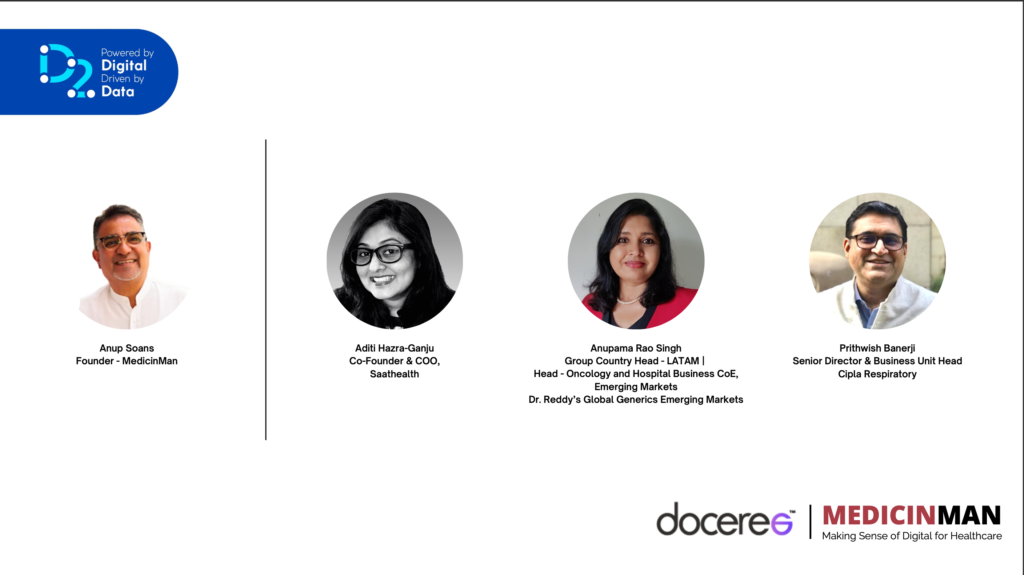
After the pandemic accelerated digital adoption in the industry, we saw more random acts than cohesive strategies. It was as if the digitally less aware industry suddenly moved into a preparedness phase and tried to do many things at the same time. Dr. Aditi Hazra Ganju co-founder of Saathealth says it was ‘an existential crisis for the industry, as other ways of reaching out had stopped during the pandemic. However, she added that digital tools existed, but were in an experimental stage before the pandemic. “This may have led to some inefficiencies in the system’.
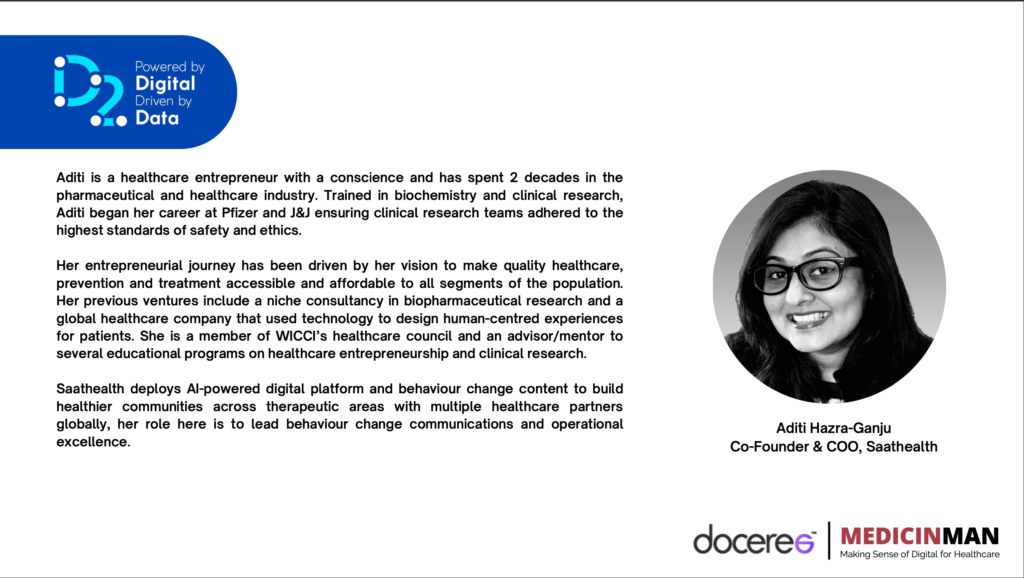
A typical digital adoption ladder is Unawareness Preparedness Utility Expertise. So how do organizations or brands evolve along the digital adoption ladder? “A lot of it is change management”, says Ms. Anupama Rao Singh – Group Country Head, Latin America for Dr. Reddy’s. Digital is about people, processes, and products and it is important to balance the three instead of focusing on the product/technology as a ‘shiny new toy’. This makes the presence of ‘bridge teams’ invaluable. Bridge teams are those that fill the gap between the business team that owns the problem (but doesn’t understand a solution) and the digital team that owns the solution (but doesn’t fully understand the problem).
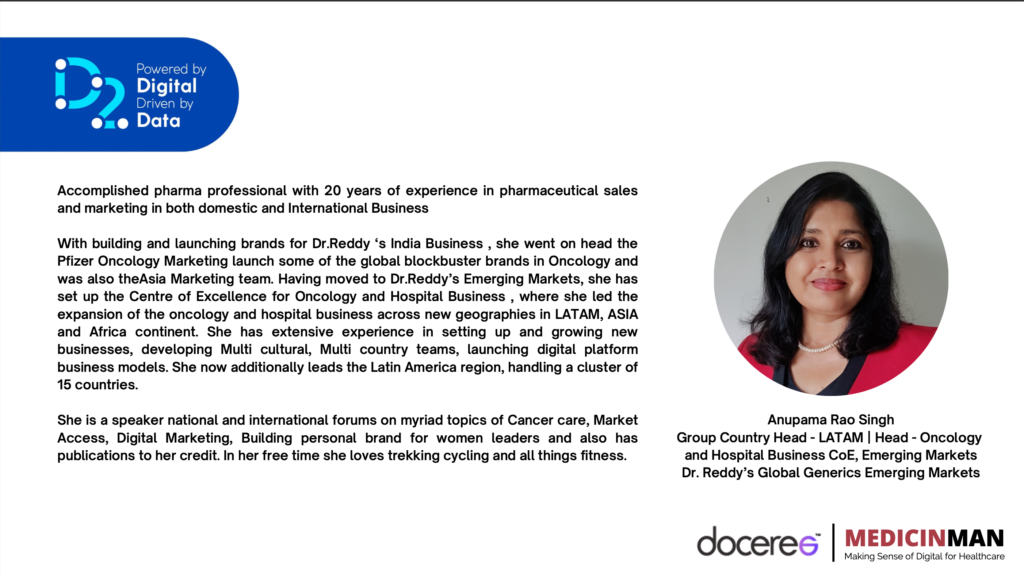
Is scaling from utility to expertise an easy task to do? Mr. Prithwish Banerji – Sr. Director at Cipla says both pharma and doctors were averse to changing (to digital) until Covid happened. And now that the pandemic is receding, most of that ‘forced change’ is lapsing back to the old behavior of face-to-face meetings. However, companies like Cipla are consciously retaining some of the digital platforms and using them to continue interacting with doctors for CMEs, advisory boards, and other scientific meetings. Multichannel engagement is also helping to bridge the gap between 1:1 meetings by the sales teams with customers. In some therapies, digital patient educators are filling in for physical educators and improving patient reach by ~2.5X.
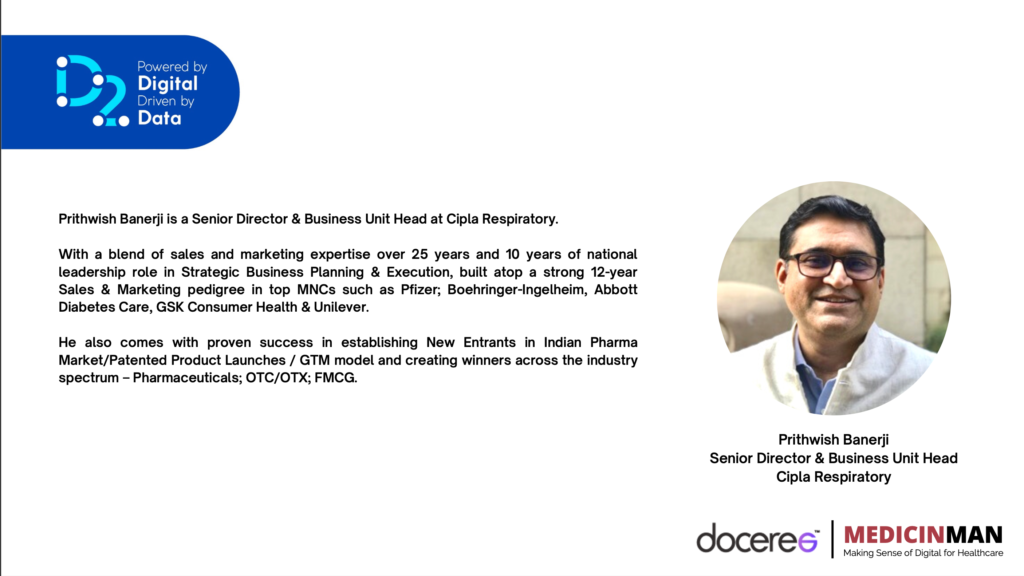
Internal mindset issues are the biggest challenges for companies that are evolving into digital adoption. How difficult or easy it is to change the internal mindset of teams when you lead a digital transformation project depends on its complexity. Like with most innovations, there is a diffusion curve. “There is a spectrum,” says Anupama. “There are team members who are the innovators who want to learn and implement, while there are those who feel that things need not change much.” Contextualizing the project to business needs is very important to get the laggards involved. In the international arena, culture and language need to be dealt with as well.
Organization and team culture are paramount for transformation. As someone who is working at scale to inculcate healthy behaviors in society at large, Aditi feels that implementation requires a complete re-imagination to make digital adoption very impactful. Working out granular customer journeys is very important to understand how to design an intervention that helps the customer. When the focus is on designing a great customer experience, executing such projects becomes easier.
Finally, the need for cross-functional collaboration has emerged as a pre-requisite for a transformational exercise such as digital. Customer centricity is not the domain of sales and marketing alone, but that of the whole organization. Rallying the whole organization, with varying agendas and priorities, around one cause is tough! “Currently it is like 7 blind men describing an elephant”, says Prithwish. Getting the company to fund a transformational project is tough. The risk of the unknown makes it tougher. All this needs a top-down approach. “I worked around the lack of funding by proposing a pay-as-you-go model. Getting funding against milestones achieved is easier on the P&L than a one-block payout,” he says. “It’s like painting a car while driving it” he laughs.
As a recent McKinsey article says, the point of digital transformation isn’t to become digital. It’s actually to generate value for the business. And having a clear, integrated, top-down road map of where that value is, is one of the biggest gaps between companies that get the full value and companies that get something that is just a shadow approximation of the full value. Pharma executives don’t have it easy. While everyone wants to ‘do digital’ not many really get it.
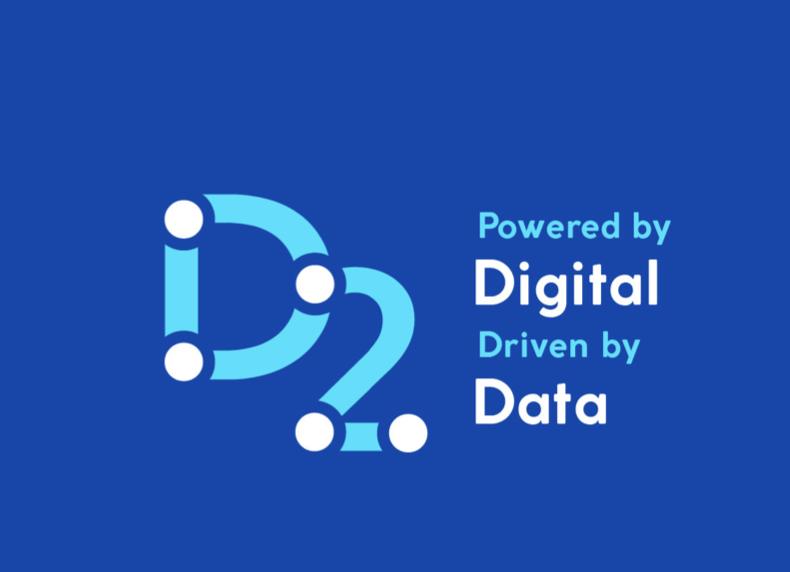
Salil Kallianpur is Executive Editor at MedicinMan and Founder – ARKS Knowledge Consulting. He has worked in senior roles at Dr. Reddy’s, Novartis, Pfizer and GSK.
